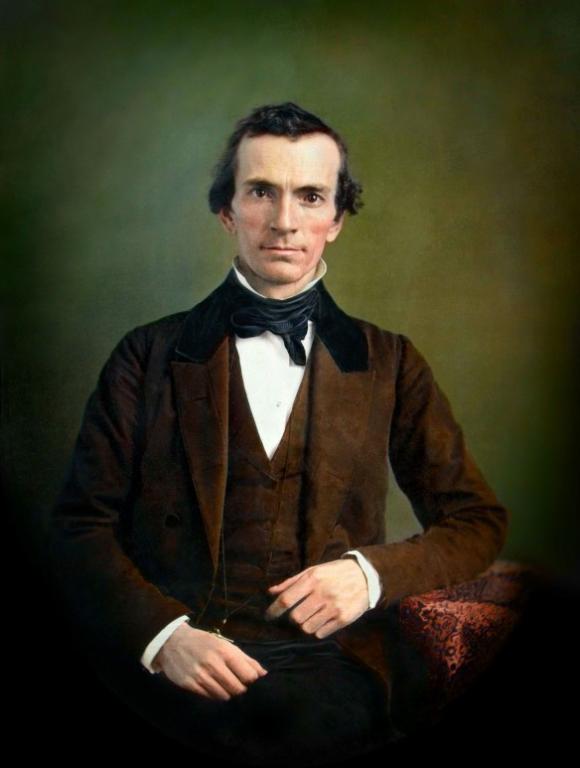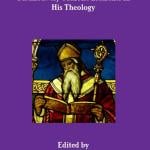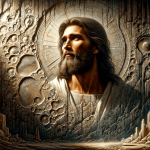
For the background of this daguerreotype, colorized by Bryce Haymond, see http://www.mormoninterpreter.com/oliver-cowdery-daguerreotype-restored-in-full-color/
(The Interpreter Foundation)
***
From our distributor:
Who do you study church history with? Bring your family or class or group of friends to June 2nd 7:20 Premiere showing of Witnesses Film and the popcorn is on us!* We need feedback on how Witnesses Film brings Come Follow Me to life! So gather your friends, your class or your family and enjoy The Family Movie Event of the Summer. ($25 concessions gift card for groups of 6+).* Message this page when booking. Tickets at
That’s tonight.
***
I published the following article in the Deseret News back on 8 April 2010. Given tonight’s premiere of the Interpreter Foundation’s Witnesses film, it seems relevant:
Oliver Cowdery can plausibly be considered the co-founder of The Church of Jesus Christ of Latter-day Saints. Commonly called the church’s “second elder” and, at one time, its “assistant president,” he wrote most of the Book of Mormon out by hand from dictation as Joseph Smith’s principal scribe, recopied the entire manuscript for the printer, and, as one of the Three Witnesses, beheld the angel Moroni, saw the plates and heard the voice of God testify that the translation was correct.
With Joseph Smith, he was ordained to the Aaronic Priesthood by John the Baptist and to the Melchizedek Priesthood by Peter, James and John. He was at Joseph Smith’s side in the Kirtland Temple on April 3, 1836, when Moses, Elias, Elijah and the Savior himself appeared there, to accept the newly dedicated building and to confer priesthood keys.
Yet Oliver Cowdery was excommunicated from the church in April 1838 and lived as a non-Mormon for the next decade. In 1848, he was rebaptized, and, two years later, he died.
For obvious reasons, Latter-day Saint historians have found Cowdery extraordinarily interesting, and they have written numerous articles about his life and career. Several of the very best of these have been gathered in John W. Welch and Larry E. Morris, eds., “Oliver Cowdery: Scribe, Elder, Witness” (Provo: The Neal A. Maxwell Institute for Religious Scholarship, Brigham Young University, 2006) — a book well worth the attention of anyone interested in the truth-claims of Mormonism and in its early history.
The cover of the book itself is important, as it features a recently discovered daguerreotype image of Oliver Cowdery that is discussed in an essay by Patrick Bishop. Other treasures include a brief biography of Cowdery by the premier expert on the Witnesses, Richard Lloyd Anderson, who also contributed pieces on “The Impact of the First Preaching in Ohio” and on the reliability of the scribe who recorded Cowdery’s testimony upon his return to the church; John W. Welch’s valuable essay on “The Coming Forth of the Book of Mormon”; Steven Harper’s “Oliver Cowdery and the Kirtland Temple Experience”; and Royal Skousen’s “Translating and Printing the Book of Mormon.” There are 17 articles in the volume, written by 13 named authors.
“Oliver Cowdery and the Restoration of the Priesthood,” compiled by Brian Q. Cannon and the BYU Studies staff, gathers and analyzes several statements from Cowdery on that important subject.
Matthew Roper’s “Oliver Cowdery and the Mythical ‘Manuscript Found’ ” scrutinizes the zombielike “Spalding Theory” of Book of Mormon authorship and finds it wanting (yet again).
Scott H. Faulring’s “The Return of Oliver Cowdery,” which won the T. Edgar Lyon Award of Excellence from the Mormon History Association when it was first published in 2000, provides fascinating and even moving background to that 1848 event, which demonstrated Oliver Cowdery’s continuing testimony of Mormonism at a time when the Saints were headed westward and when casting one’s lot with them was anything but an easy road to prosperity or social status.
Larry Morris’ article on “Oliver Cowdery’s Vermont Years and the Origins of Mormonism” dismantles persistent attempts to link Joseph Smith Sr. with Oliver Cowdery’s father in a divining-rod incident that, so the theory goes, helps to explain (away) the founding of the church 25 years later. It also demolishes equally persistent efforts to tie Oliver Cowdery to the Rev. Ethan Smith and, thereby, to portray the Book of Mormon as plagiarized from the Rev. Smith’s “View of the Hebrews.”
As if that weren’t contribution enough, Morris’ ” ‘The Private Character of the Man Who Bore that Testimony’: Oliver Cowdery and His Critics” defends Cowdery’s reputation, intelligence and honesty against writers who, in their ardent desire to negate his testimony, have attempted to besmirch his name. Morris, who is emerging as a treasure in his own right, demonstrates that the critics rely upon weak evidence, questionable sources and circular reasoning to make their fatally flawed case.
The founding events of the Restoration took place in the literal material world. They were not metaphorical. They were not merely symbolic. Accordingly, they are of immense significance to all of humanity. Oliver Cowdery’s unwavering eyewitness testimony of them, through persecution, suffering, illness, disappointment, anger and even excommunication, is powerful evidence of their reality. This book, “Oliver Cowdery: Scribe, Elder, Witness,” provides powerful scholarly evidence that his testimony can be trusted.
And, while I’m on the subject of “witnesses,” here’s an article by Karl Ricks Anderson, whom President Hinckley dubbed “Mr. Kirland,” from Meridian Magazine:
“Witnesses Who Saw the Savior in Kirtland”
***
Here’s something that I found interesting on a quite different topic:
Well, no. Maybe it’s not really as irrelevant to the Witnesses of the Book of Mormon (and to other witnesses) as it may seem at first glance. I like what Richard Bushman wrote to me some years ago, back when the Witnesses film project was just beginning to get underway:
The testimonies of the three witnesses are the closest we come to rational evidence for Mormon belief. Three men attest to a sensory encounter with the gold plates and a divine being. In an age of skepticism, when all religious belief is under attack, their statement becomes more relevant every day.
***
Finally, this bit on a topic that also may not be absolutely unrelated as it might seem at first glance:
“Thinking with Ryan Burge: Concerning young Latter-day Saints, third parties and life post-Trump”










